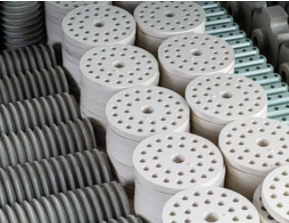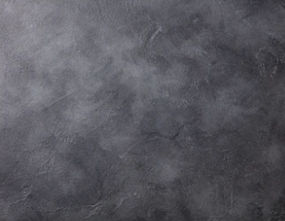Ceramic Characterization Using the iEM Platform

Ceramics are essentially a fusion of smaller, simpler crystalline elements into a bulk material. As a result, the microstructure and crystalline properties of ceramics are critical. In order to accurately evaluate the reliability and defects of ceramic materials, electron microscopy (EM) is an indispensable tool. In particular, EM uses accelerated electrons for imaging, overcoming the limitations of optical microscopy. By combining various technologies, such as energy-dispersive X-ray spectroscopy (EDS), EM has become a more versatile analytical device in ceramic characterization. Here we use advanced scanning electron microscopy (SEM) and transmission electron microscopy (TEM) to evaluate ceramics for a wide range of ceramic characterization needs.
Applications of Ceramic Materials
Due to the advantages of high-temperature resistance, high hardness, and chemical properties, ceramics as key materials have been widely used in various fields, such as healthcare, renewable or alternative energy, automotive, electronics, and so on. Factors such as grain size and volume, microstructure, element distribution, agglomeration, porosity, and surface roughness of ceramics all affect the properties of the material. The field of ceramic engineering has created a large number of different special materials. The grain sizes and microstructures of ceramics can be optimized with ceramic processing parameters for specific products requiring high hardness, high melting point, high thermal expansion, high corrosion resistance, and other requirements.
Ceramic Characterization at the iEM Platform

To better understand the relationship between property and microstructure and to facilitate the production of high-performance ceramics, we offer EM analysis, including SEM with energy-dispersive X-ray spectroscopy (EDS) and TEM with EDS. Our services can be non-destructive and allow direct observation of microstructural features on the surface, interface, and interior of ceramic materials. In addition, elemental analysis using EM with EDS can provide valuable information related to structure for ceramic materials. The process can be evaluated to optimize the composition that best suits the product"s performance and mechanical properties. Notably, the most basic preparation for viewing ceramic samples under SEM is to coat them with a conductor film. We can also provide SEM observation at low vacuum levels if the customer requires uncoated film observation for special reasons. The following aspects can be examined by our advanced analytical tools, including,
- The morphological observation of ceramics and related materials.
- Microstructure evaluation of ceramics and related materials.
- Grain sizes, coverage, and distribution of ceramics and related materials.
- Elemental analysis of the components of ceramics and related materials.
- Porosity, pore distribution of ceramics and related materials.
- Cracks and crack distribution of ceramics and related materials.
Applications of Our Services
- Identification of new ceramics materials.
- For ceramic research and development.
- To identify second phases on ceramic surfaces.
- To examine contamination or agglomerates of ceramics and related materials.
In-depth characterization is necessary for the successful development of structural and functional ceramics. The observation of the microstructure of ceramic materials by EM is a promising technique for obtaining new discoveries at the atomic scale and developing the phenomenological theory of ceramic materials. If you are interested in our services, please don't hesitate to contact us. Creative Biostructure is always open to your questions and are happy to support you.

